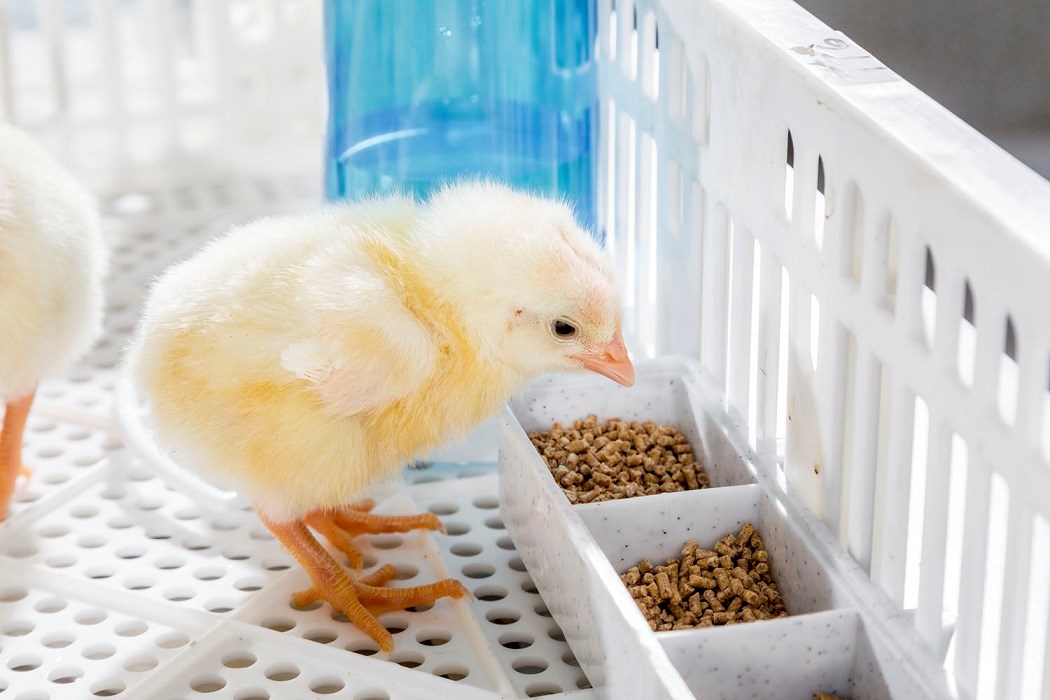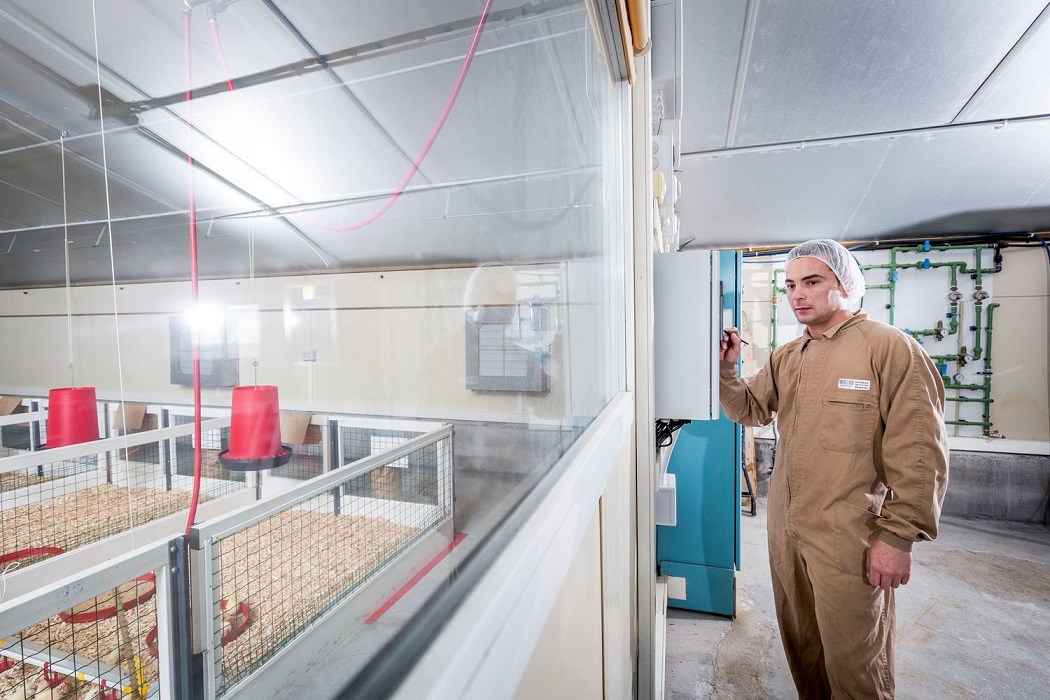
Effect of L-glutamic acid N,N-diacetic acid on the availability of dietary zinc in broiler chickens
- Poultry
Výzkumné zařízení pro drůbež má vlastní pokusnou výrobnu krmiv, která nám umožňuje vyrábět veškerá krmiva, která používáme přímo na místě. Tatro výhodao umožňuje studovat velké množství různých experimentálních krmiv a ušetřit značné množství emisí CO2 v ekvivalentu dopravy. Všechny pytle s krmivem jsou před převozem do zařízení přesně zváženy a barevně označeny, aby se odlišily jednotlivé způsoby ošetření.


Zařízení pro nosnice pojme více než 1 500 kusů a umožňuje nám intenzivně sledovat zdravotní stav a produkci. Místa jsou speciálně navrženy pro studium koncepce dělené výživy, kdy nosnicím poskytujeme různé složení krmiva ráno a večer, abychom přesněji uspokojili požadavky nosnic na živiny během cyklu tvorby vajec. Jedná se o příklad udržitelné precizní výživy, která vede k lepší produkci nosnic a snížení emisí dusíku a fosforu do životního prostředí. Zařízení pro nosnice nám umožňuje plně kontrolovat prostředí a simulovat různé podmínky na celém světě. Můžeme studovat důležité ukazatele, jako je příjem krmiva a vody, tělesná hmotnost a složení exkrementů, stejně jako kvalitu skořápky a vajec.
Líheň nám umožňuje sledovat kuřata hned po vylíhnutí a studovat vliv pohlaví, genetiky, hladovění a okamžité dostupnosti krmiva. Tato studie je součástí projektu LifeStart, který vychází z filozofie, že to, co se děje během prvních dnů života, ovlivňuje celoživotní produkci.


V halách pro chov brojlerů je možné umístit více než 6 000 kuřat, přičemž klima je plně regulovatelné. Jedna ze studií prováděných v těchto zařízeních se týká modelu pro brojlery, který vypočítává náklady na krmivo, výnosy a marži pomocí předpovědi růstu, konverze a jatečné výtěžnosti. V těchto zařízeních bylo také rozsáhle zkoumáno naše portfolio doplňkových látek.
Naším nejnovějším přírůstkem do výzkumného zařízení pro drůbež, vybudovaným v roce 2020, je nové zařízení pro drůbež s řízeným klimatem a čtyřmi identickými výzkumnými místnostmi, které nám umožňují simulovat podmínky prostředí a vyhodnocovat různá řešení při běžných nebo náročnějších scénářích. O tomto zařízení si můžete přečíst více zde .

Příležitost pro návštěvníky - včetně chovatelů, akademiků a dalších výzkumných pracovníků - navštívit zařízení a pochopit, jak výzkum ovlivňuje naše řešení, přináší novou úroveň transparentnosti pro zúčastněné strany v celém řetězci výroby krmiv.
